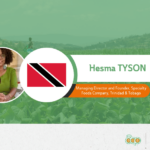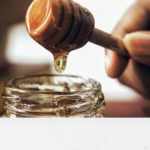IMPORTANT MESSAGE TO COMPETENT AUTHORITIES AND OPERATORS IN THE CAPSICUM SECTOR (CHILLIES AND PEPPERS)
- 23/05/2019
- Posted by: Gaetan Dermien
- Category: Uncategorized
A new European Union implementing directive has important consequences for exporters of chillies and peppers (Capsicum spp.) – dossiers describing the treatment applied for false codling moth on capsicum must now provide evidence of the treatment’s effectiveness. Countries that have already submitted a dossier need to send a new version both describing the treatment method and including evidence of effectiveness.
Under its Fit For Market programmes, COLEACP is available to support National Plant Protection Organisations (NPPOs) and the capsicum industry in each country in developing dossiers that must be submitted (or resubmitted) to the EC before the end of this year. COLEACP is also available to work with the capsicum industry and national authorities to help put the necessary actions in place. Contact us at support@coleacp.org
The European Union is in the process of overhauling its plant health regulations. In December 2019, the new EU plant health regulation will become fully operational. In the meantime, the existing rules are being enforced more rigorously, and special measures have already been introduced for a number of imported crops where there have been high numbers of notifications due to quarantine pests.
The new EU plant health rules focus on crops that are a known pathway into the EU of serious pests that could damage EU agriculture or the environment. One of these is the false codling moth (Thaumatotibia leucotreta). For capsicum, emergency measures were first issued in 2017 under Regulation (EU) 2017/1279 (see Annex IV Part A, Point 16.6). A new implementing directive (EU) 2019/523 was issued in March containing some important amendments to the original measures in Point 16.6.
Producers and NPPOs are now familiar with the new rules issued in 2017 on capsicum exports. The directive gave four possible options to supply capsicum to the EU, but only two are applicable to the capsicum sector in ACP countries. The first two require pest-free countries or zones , which in practice are not viable options for this pest.
Option 3 requires a place of production designated as free from false codling moth. Some countries have adopted this option by using screen houses combined with a series of inspections by the NPPO at the production site, conducted according to procedures specified in the directive.
Most exporting countries opted for Option 4, according to which capsicum imports are only permitted into the EU if they have been subjected to an effective treatment to ensure the produce is free from the pest.
Before the end of 2017, NPPOs were required to submit a dossier to the EC outlining their selected option and treatment protocol.
The new implementing directive issued in March (2019/523) brings in an important change to Option 4. This change will apply from September 1st 2019:
Capsicum imported into the EU must “have been subjected to an effective cold treatment to ensure freedom from Thaumatotibia leucotreta (Meyrick) or another effective treatment to ensure freedom from Thaumatotibia leucotreta (Meyrick) and the treatment data should be indicated on the certificates referred to in Article 13(1)(ii), provided that the treatment method together with documentary evidence of its effectiveness has been communicated in advance in writing by the national plant protection organisation of the third country concerned to the Commission.”
Countries that have opted for Option 4 therefore need to send a new dossier describing the treatment method, and this time providing evidence of its effectiveness.
There is no change for countries that opted for Option 3.
COLEACP will continue to publish updates on the details of the new rules as they become available.



![EU and GB approval changes (January-May 2024) 9-FFM+-[ENG]](https://news.colead.link/wp-content/uploads/2024/06/9-FFM-ENG-150x150.jpg)
